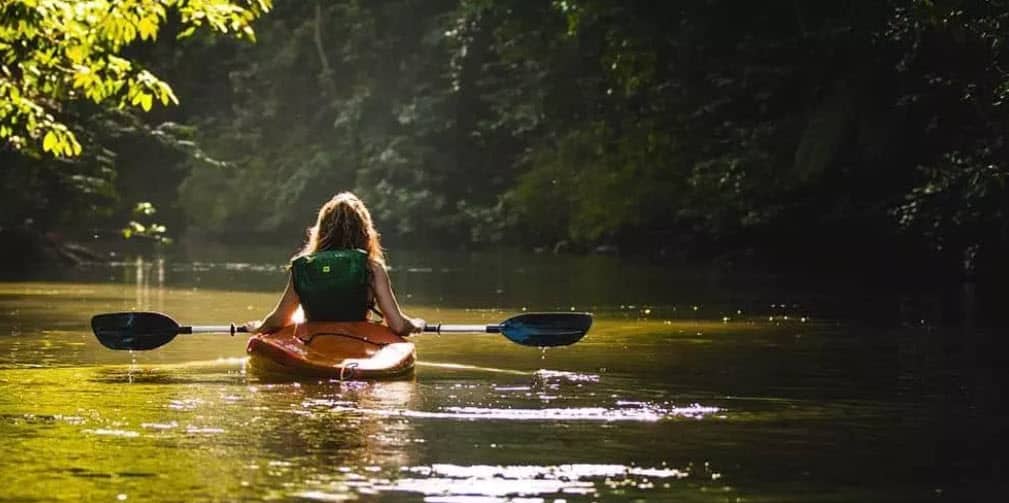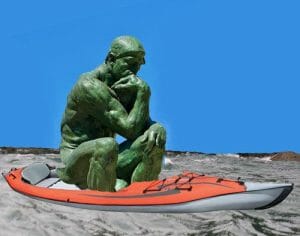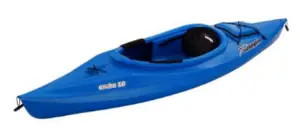Introduction to Kayaking

Summer or not, it is always a good time to take a break from the hustle and bustle of the city and retreat to a more relaxing and peaceful location, like the beach or by the lake. With so many water activities to choose from, you definitely cannot get bored!
One of the most popular activities for people who want to test and ride with the waves is kayaking. It is not as extreme or complicated as surfing, but it is certainly one of the most enjoyable things you can do on water. Are you tired of swimming all day? Try kayaking instead!
But, before you jump on a kayak, make sure you are familiar with the activity first. It is not an easy-peasy one, after all. Continue reading below to get our introduction to kayaking!
Introduction to Kayaking – Kayaking Sport Overview
Kayaking may look like simply riding on a boat, but it is much more complex.
Considered as both a recreational activity and a competitive sport, kayaking is usually performed with a specialized boat, “the kayak”, and a double-bladed oar for paddling. Kayaking is very versatile and can be done in practically any body of water—In fact, you can do it on rivers, oceans, seas, and even big lakes.
A more interesting and exciting fact about kayaking is that you do not need any advanced skills to do it. Whether you are a first-timer or a seasoned kayaker, you can practice kayaking easily. However, it is still best to have a professional nearby, especially if you are kayaking for the first time. Remember, safety first!
Kayaking History
 Nowadays, kayaking is considered one of the preferred water activities by a majority of people in the world. But back when it was first discovered, kayaking was considered anything but a recreation activity.
Nowadays, kayaking is considered one of the preferred water activities by a majority of people in the world. But back when it was first discovered, kayaking was considered anything but a recreation activity.
The earliest record of a kayak’s usage happened thousands of years ago. The Inuits (or Eskimos), inhabitants of the arctic region, created and used kayaks made of driftwood and sealskins to serve as their primary mode of transportation for hunting, fishing, and transferring supplies from one place to another. In fact, the term “kayak” literally translates to “hunter’s boat.”
As years and seasons changed, so did the construction of kayaks. In the early 1900s, Europeans replaced sealskin covers with fabric, and thanks to Hans Klepper, a German inventor, the folding kayak was born.
By the 1930s, kayaks had become more than just a necessary mode of transport—as evident by the use of kayaks in the 1936 Berlin Olympics. As time passed by, several versions of kayaks were also invented—fiberglass, plastic, and more. Until today, kayaks are still improving in terms of materials and construction.
Types of kayak
In reality, there are two types of kayak:Sit in kayak, Sit on Top Kayak
 A sit-in kayak is the most common (and traditional) type of kayak— this is the one which is usually seen in pictures and river kayaking. As the name suggests, with this kayak, the user sits inside, meaning most of his/her body is going to be covered in an enclosed cockpit. To prevent water from splashing on the upper part of your body (which is not that covered), you can purchase a spray skirt, which also functions as a flexible gasket.
A sit-in kayak is the most common (and traditional) type of kayak— this is the one which is usually seen in pictures and river kayaking. As the name suggests, with this kayak, the user sits inside, meaning most of his/her body is going to be covered in an enclosed cockpit. To prevent water from splashing on the upper part of your body (which is not that covered), you can purchase a spray skirt, which also functions as a flexible gasket.
 Sit on top kayak
Sit on top kayak
Unlike sit-in kayaks, this type allows the lower part of your body to be a bit free, since it is not secured in an enclosed cockpit. Sit-on-top kayaks are also affordable and recommended for first-timers and recreational kayakers. Choose this type of kayak if you are still practicing and honing your skills.
Kinds of kayak
There are also different kinds of kayaks, each with their own purpose and advantages:Recreational kayaks
This type of kayak is perfect for beginners or those who just want to enjoy calm rivers or lakes. Recreational kayaks are not meant for more extreme modes of kayaking, but they are still sturdy and are made for comfort and stability. Recreational kayaks can be sit-in or sit-on-top—go with whatever suits your leisurely needs.
Whitewater kayaks
For people who want more adventure than a calm river and wish to go with the rapids, then this kind of kayak is the one to rent or buy. It has two major subcategories: creek boats (for overall versatility) and play boats (for trick contests and optimum maneuverability). Whitewater kayaks are also smaller than touring kayaks, and they are often made of high-impact plastic.
Touring kayaks
For long escapades in different bodies of water, a touring kayak is the one for you. This kind of kayak has a long design, which makes it easy for people to store things for overnight of all-day activities. It is also energy-efficient, which makes it a lot easier to paddle fast and far.

Inflatable kayaks
Like the name suggests, inflatable kayaks are not constructed from the usual materials that other kayaks are made of. This kind is commonly made of high-denier nylon and PVC, and is perfect for people who want to go kayaking for recreation. Since they are inflatable, they are very portable and take less space than other kinds of kayaks.
 Fishing kayaks
Fishing kayaks
If you want to fish with other modes of transport than a common boat, then a sturdy fishing kayak is for you. It has angler-friendly rod holders and ample storage spaces for your fresh catches of the day. Fishing kayaks are usually simple and has great access to remote spots, making them greater than small boats for true-blue anglers.

Tandem kayaks
Most kayaks can only fit one person, but tandem kayaks are different. This kind of kayak can sit up to two paddlers, and are available in both sit-in and sit-on-top types. Because of its slightly upgraded seating capacity, tandem kayaks are the common choice of couples or families who wish to enjoy recreational kayaking with their loved ones.
Closing
 Recreational kayaking might be peaceful, but it does not hurt to have a professional teach you a thing or two. After all, kayaking is done on water, and accidents might happen, so might as well get thoroughly educated before getting on (or in) that kayak. Dress for the water
Recreational kayaking might be peaceful, but it does not hurt to have a professional teach you a thing or two. After all, kayaking is done on water, and accidents might happen, so might as well get thoroughly educated before getting on (or in) that kayak. Dress for the water
Before kayaking, consider the temperature of the water that you are about to paddle on. Wear a life jacket all the time and layer up with clothes if the water is cold. Remember: safety first!
Choose your gear
Depending on the type of kayaking activity that you want to do, choose the right kind of kayak and paddle for you. If you are just going for a stroll, then a recreational kayak might be a good choice. Want to go on a whitewater or rapid adventure? Opt for a whitewater kayak, then! Remember: choose carefully. Make yourself comfortable
Most probably, you will be kayaking for hours, so it is very important to make yourself comfortable and at ease. Sit straight and make sure that you are paddling the right way.
